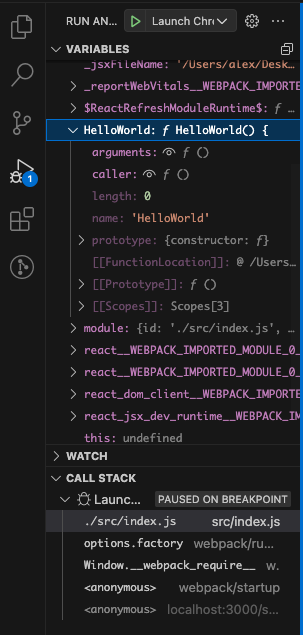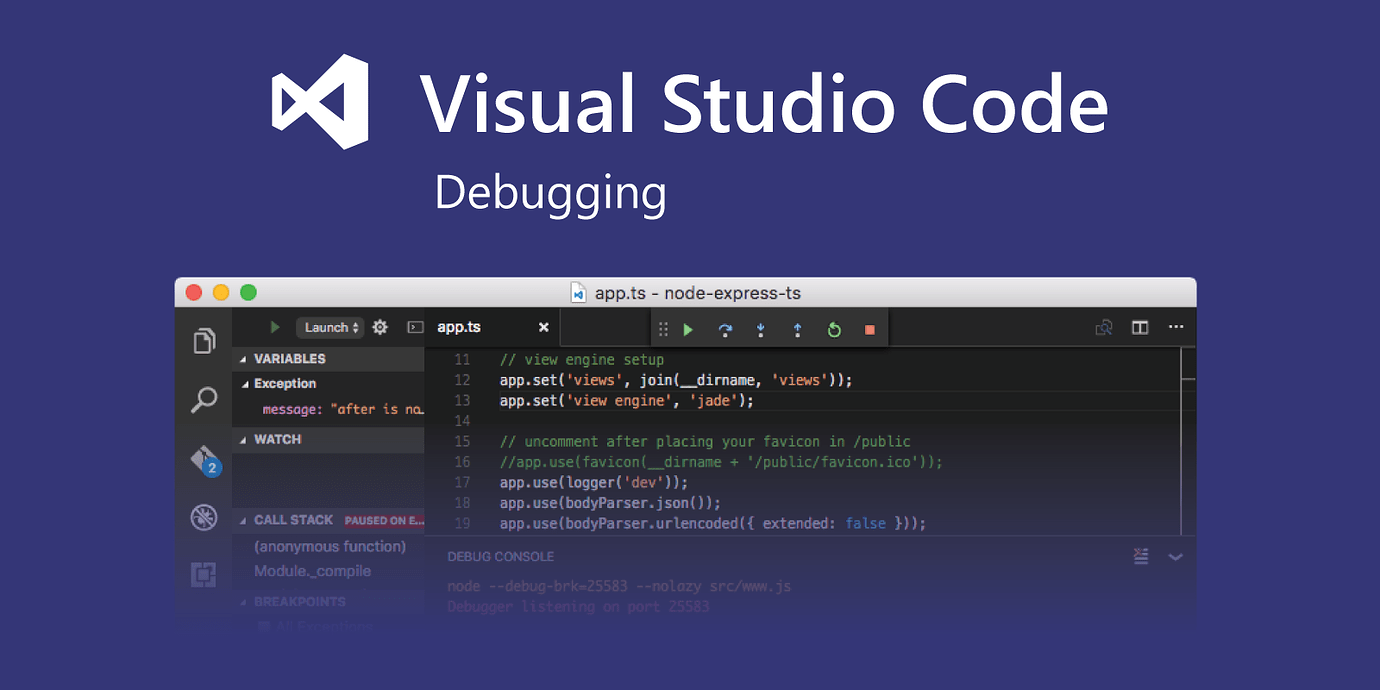
We also have more detailed walkthroughs to get started with React, Angular, Vue, and Ember, as well as other debugging recipes.

Clicking a link in the JavaScript debug terminal.Use the Open Link command to debug a URL.There are a couple ways to get started with it. Visual Studio Code includes a built-in debugger for Edge and Chrome. Configure IntelliSense for cross-compiling.This enables the live editing and debugging experiences, without adding a need for more file watches or background tools. Our debugger is now able to pickup these changes and re-applies the newly generated HMR sourcemap to the loaded source files on the fly. Our Chrome debugger now supports Webpack’s Hot Module Replacement mechanism, which pushes module changes to the browser by running a local file watcher. Start debugging in VS Code by pressing F5or by clicking the green debug icon.Start your React app by running npm start in your favorite terminal.Use the following config for your launch.jsonfile to configure the VS Code debugger and put it inside.Create your React app using create-react-app.Download the latest release of VS Code and install our Chrome debugger.You can now write code, set a breakpoints, make a changes to the code, and debug your newly modified code - all from your editor 🔥 🎉🎈 How to get started in 6 steps

This enables you as a developer to write and debug your React code without leaving the editor, and most importantly it enables you to have a continuous development workflow, where context switching is minimal, as you don’t have to switch between tools. In our most recent release of our Chrome debugger for VS Code, we have landed a bunch of improvements to our sourcemapping-engine, which enables us to support live-editing and debugging out of the box with create-react-app.


 0 kommentar(er)
0 kommentar(er)
